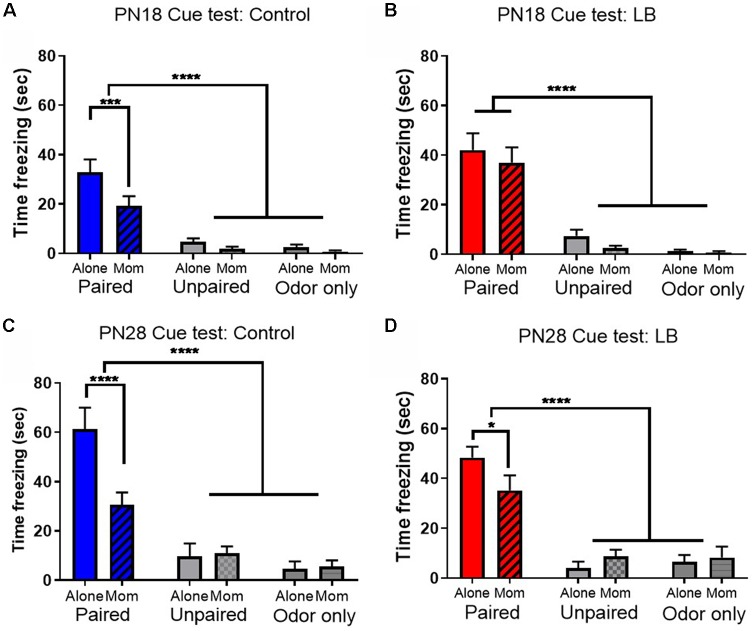Figure 3.
Early abuse modulates maternal buffering of odor-shock conditioning. Total (seconds) freezing (±SEM) to a conditioned stimulus (CS) was higher in Paired odor-shock conditions than Unpaired and Odor only conditions. Maternal presence during conditioning attenuated learning at both (A,B) PN18 Control (Paired: Alone n = 12; Mom n = 12; Unpaired: Alone n = 12; Mom n = 12; odor Only: Alone n = 12; Mom n = 12) and LB (Paired: Alone n = 11; Mom n = 12; Unpaired: Alone n = 12; Mom n = 12; odor Only: Alone n = 12; Mom n = 12) and (C,D) PN28 Control (Paired: Alone n = 9; Mom n = 10; Unpaired: Alone n = 8; Mom n = 8; odor Only: Alone n = 8; Mom n = 8) and LB (Paired: Alone n = 14; Mom n = 14; Unpaired: Alone n = 8; Mom n = 8; odor Only: Alone n = 8; Mom n = 8), although this maternal presence effect was not present following early life PN18 LB maltreatment and present but attenuated following early life PN28 LB maltreatment. *p < 0.05, ****p < 0.0001.

